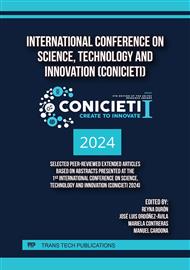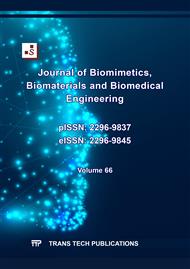[1]
The Dalkon Shield. FDA Consum. 1975 Feb;9(1):21. PMID: 10308671.
Google Scholar
[2]
Information on the World Health Organization. (2019). Retrieved from https://www.who.int/es/news-room/fact-sheets/detail/patient-safety#:~:text=Los%20eventos%20adversos%20debidos%20a,recibe%20atenci%C3%B3n%20hospitalaria%20(2)
Google Scholar
[3]
Kohn, L. T. (2000). To Err Is Human: Building a Safer Health System. Washington, DC.
Google Scholar
[4]
Maria Pilar Astier-Peña. (2021). El Plan de acción mundial para la seguridad del paciente 2021-2030: identificando acciones para una atención primaria más segura. ELSEVIER
DOI: 10.1016/j.aprim.2021.102224
Google Scholar
[5]
Information on CONAMED. (2015). Conamed-OPS. Retrieved from http://www.conamed.gob.mx/gobmx/boletin/pdf/boletin3/eventos_adversos.pdf
Google Scholar
[6]
Vries, E. N. (2008). The incidence and nature of in-hospital adverse events: a systematic review. Qual Saf Health Care
Google Scholar
[7]
Improving Health Care Worldwide. (2018). Crossing the Global Quality Chasm.
Google Scholar
[8]
Gutierrez, I. (2006). Efectos Adversos en una Unidad de Cuidados Intensivos. Retrieved from https://zaguan.unizar.es/record/4549/files/TESIS-2010-024.pdf
Google Scholar
[9]
González Vargas, A. M. (2017). La Tecnovigilancia y la Gestión de Riesgos como Herramientas para Mejorar Seguridad de los Pacientes en las Instituciones de Salud Colombianas. Revista Ingeniería Biomédica
DOI: 10.24050/19099762.n21.2017.1173
Google Scholar
[10]
Noble. (2015). Los 10 Principales Peligros Tecnológicos del Sector Salud. Retrieved from http://asegurados.descargas.nobleseguros.com/download/posts/November2017/ew4T3VTWGtK7WpG60fEH.pdf
Google Scholar
[11]
Anders, J. C. (2019). Facilities and Difficulties of Health Professionals Regarding the Adverse Event Reporting Process. Scielo
DOI: 10.1590/1980-265X-TCE-2018-0040
Google Scholar
[12]
Pimentel, A. C. (2019). La notificación y análisis de los eventos adversos: experiencia en el HONADOMANI San Bartolomé. Scielo
DOI: 10.31403/rpgo.v65i2151
Google Scholar
[13]
OMS. (2016). Retrieved from https://www.who.int/publications/i/item/WHO-HIS-SDS-2016.2
Google Scholar
[14]
Guijarro, F. (2015). Manual de Tecnovigilancia.
Google Scholar
[15]
Agencia Española de Medicamentos y Productos Sanitarios. (2022). Ministerio de Salud. Retrieved from https://www.aemps.gob.es/la-aemps/quienes-somos/
Google Scholar
[16]
Agencia Española de Medicamentos y Productos Sanitarios. (2019). Retrieved from https://www.aemps.gob.es/vigilancia/productosSanitarios/docs/vig-prof-nota.pdf?x42382
Google Scholar
[17]
Agencia Española de Medicamentos y Productos Sanitarios. (2016). Ministerio de sanidad, consumo y bienestar social. Retrieved from https://www.aemps.gob.es/publicaciones/tripticos-divulgativos/docs/TRIPTICO_VIGILANCIA_PPSS.pdf?x42382
Google Scholar
[18]
Aranaz, J. (2005). Estudio Nacional sobre los Efectos Adversos ligados a la Hospitalización. Retrieved from https://seguridaddelpaciente.es/resources/contenidos/castellano/ 2006/ENEAS.pdf
Google Scholar
[19]
Menéndez, M., Rancaño, & García, V. (2010). Uso de diferentes sistemas de notificación de eventos adversos: ¿mucho ruido y pocas nueces? doi:
DOI: 10.1016/j.cali.2010.02.001
Google Scholar
[20]
Rojas-Armadillo, M., Jiménez, M., Chávez-Hernández, M., & Fondón, A. (2015). Validación de un sistema de registro de eventos adversos en atención primaria. Retrieved from https://www.medigraphic.com/pdfs/imss/im-2016/im163j.pdf
Google Scholar
[21]
COFEPRIS. (2017). Retrieved from https://www.gob.mx/cofepris/acciones-y-programas/antecedentes-tecnovigilancia
Google Scholar
[22]
Mucito-Varela, E., & Sánchez-Oviedo, F. V. (2020). Tecnovigilancia en los laboratorios clínicos: una herramienta para la seguridad del paciente. doi:
DOI: 10.35366/97337
Google Scholar
[23]
Instituto de Salud Pública de Chile. (2022). Instituto de Salud Pública. Retrieved from https://www.ispch.gob.cl/andid/tecnovigilancia/
DOI: 10.34052/rispch.v6i1
Google Scholar
[24]
Pacheco, M., Donoso, P., & Valdés León, C. (2021). Guía del Sistema Nacional de Tecnovigilancia. Retrieved from https://www.ispch.cl/wp-content/uploads/2021/02/ GuiaTecnovigilancia01-01022021A.pdf
Google Scholar
[25]
Administración de Alimentos y Medicamentos. (2022). Medical Device Reporting (MDR): How to Report Medical Device Problems. Retrieved formhttps://www.fda.gov/medical-devices/medical-device-safety/medical-device-reporting-mdr-how-report-medical-device-problems
DOI: 10.1887/0750307684/b1067b4
Google Scholar
[26]
Cáceres, Y. (2022). Ex director de ARSA. (A. Ramírez, & G. Cribas, Entrevistadores)
Google Scholar
[27]
Otero-Ortega, A. (2018). Enfoques de Investigación. Retrieved from https://www.researchgate.net/publication/326905435_ENFOQUES_DE_INVESTIGACION
Google Scholar
[28]
Díaz Bravo, L., Torruco García, U., Martínez Hernández, M., & Varela Ruiz, M. (2013). La entrevista, recurso flexible y dinámico. Retrieved from https://www.scielo.org.mx/scielo.php?script=sci_arttext&pid=S2007-50572013000300009#:~:text=La%20entrevista%20es%20una%20t%C3%A9cnica,al%20simple%20hecho%20de%20conversar.&text=Es%20un%20instrumento%20t%C3%A9cnico%20que%20adopta%20la%20forma%20de%20un%20.
DOI: 10.1016/s2007-5057(13)72706-6
Google Scholar
[29]
Information amoCRM (2012). Retrieved from https://www.amocrm.com.co/index.html
Google Scholar



